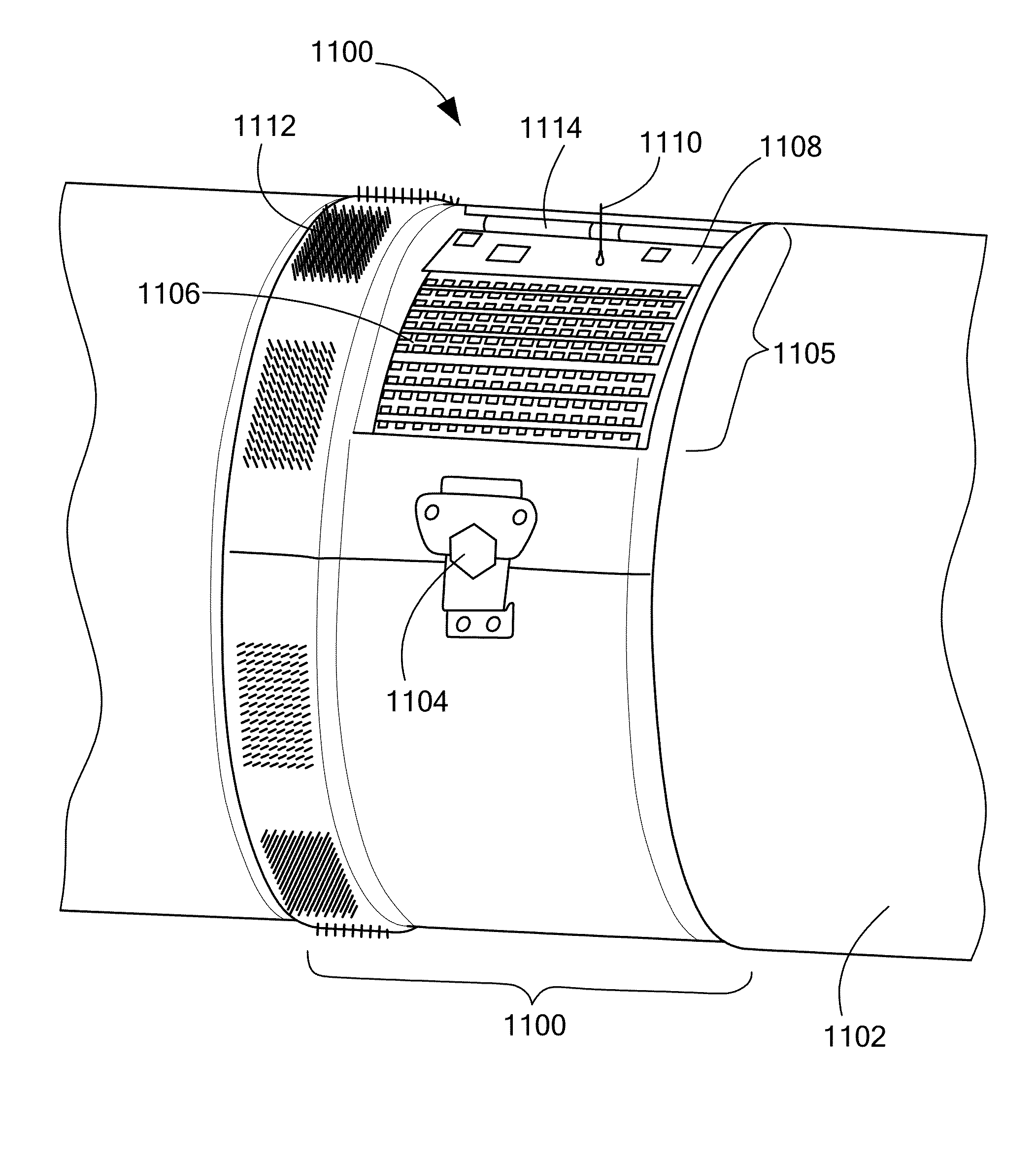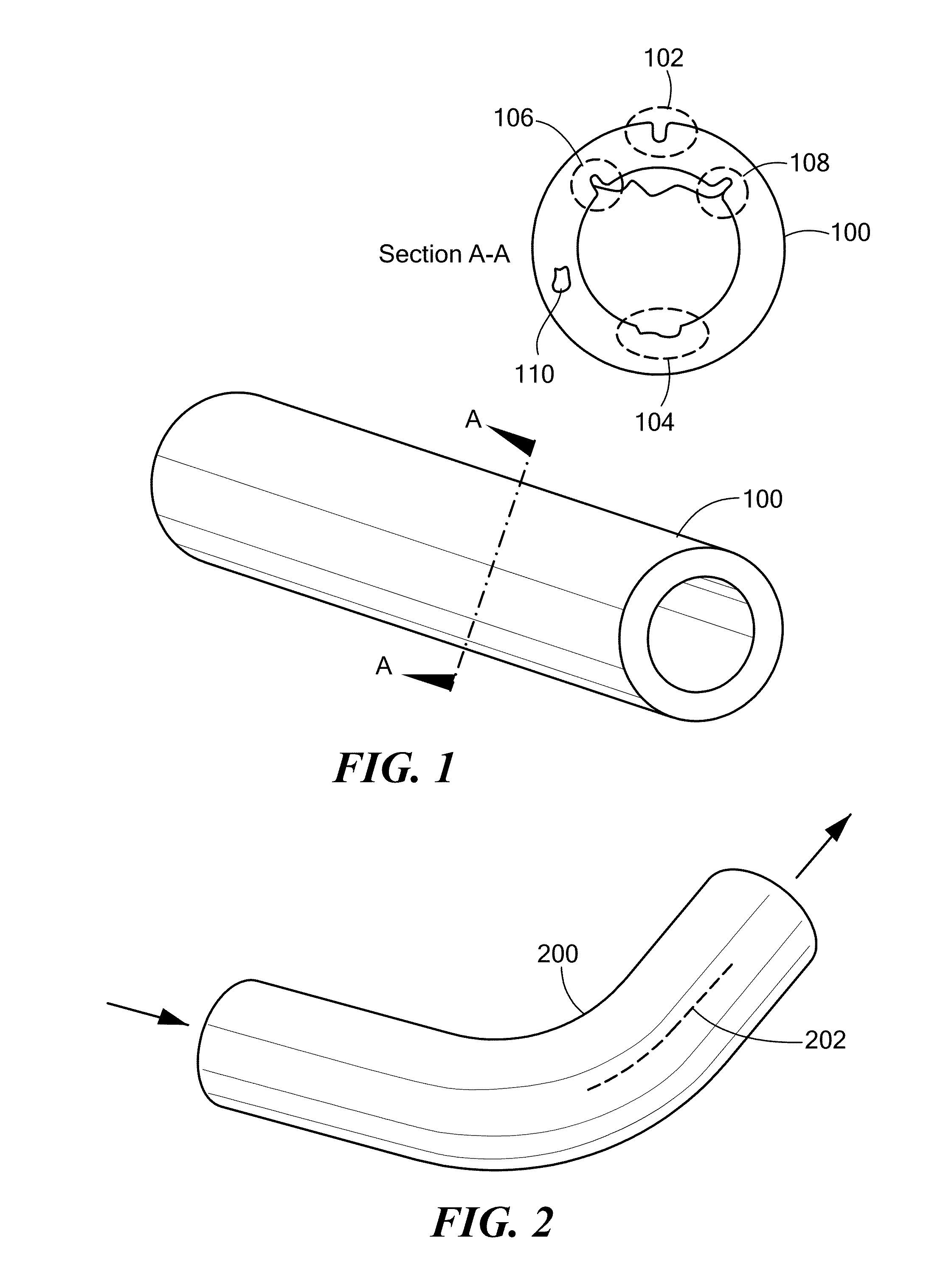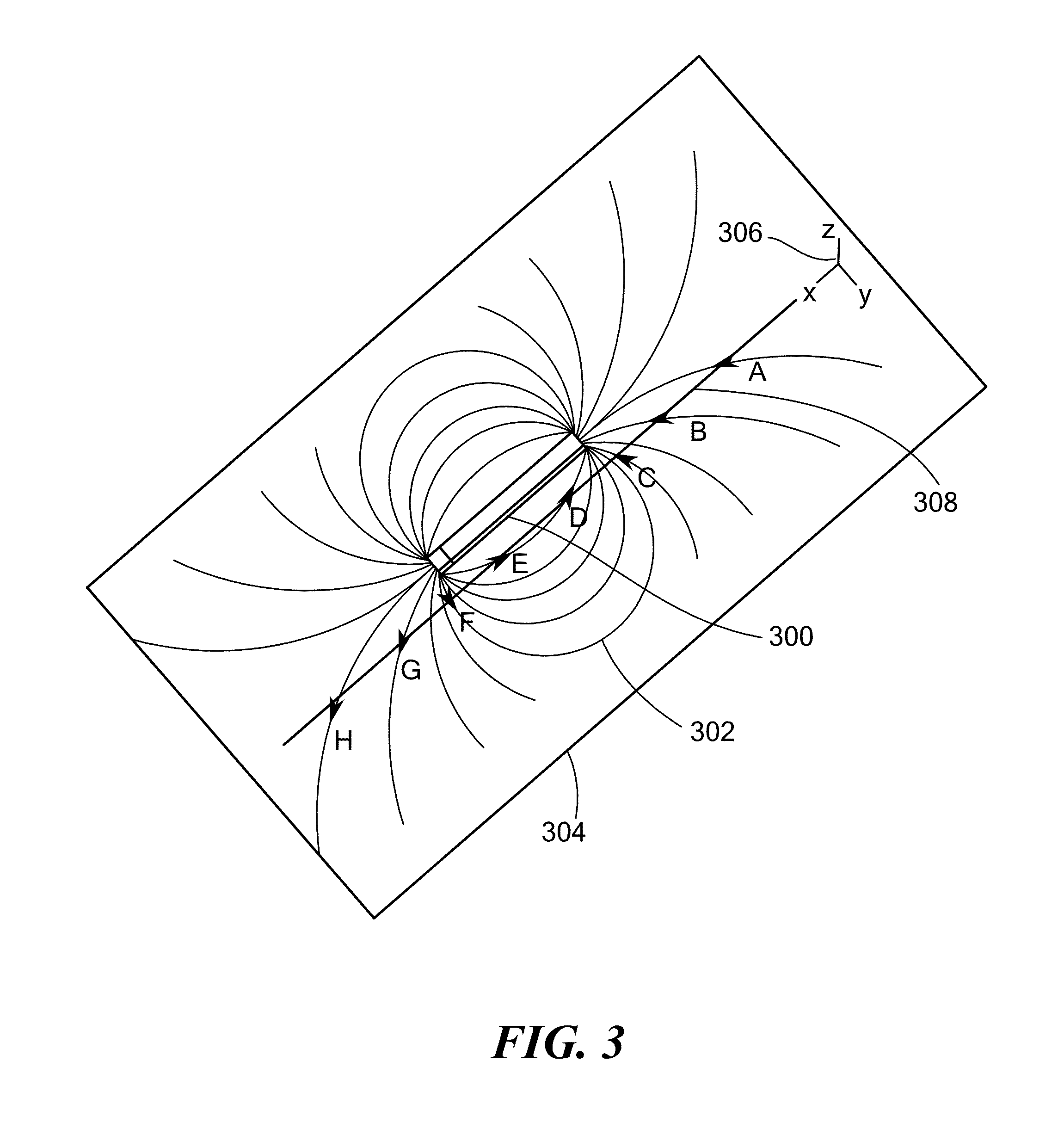System and Method of Measuring Defects in Ferromagnetic Materials
a technology of ferromagnetic materials and defects, applied in the direction of material magnetic variables, material analysis through optical means, instruments, etc., can solve the problems of sand produced in an oil or gas well abrade the inside, material corrosion and/or erosion, and high cost and time-consuming
- Summary
- Abstract
- Description
- Claims
- Application Information
AI Technical Summary
Benefits of technology
Problems solved by technology
Method used
Image
Examples
Embodiment Construction
[0007]An embodiment of the present invention provides a system for detecting defects in a ferromagnetic material. The system includes a plurality of magnetometers. The plurality of magnetometers is disposed about a surface of the ferromagnetic material. The plurality of magnetometers senses a magnetic field generated by the ferromagnetic material. The plurality of magnetometers generates magnetic field data, based on the sensed magnetic field. Each magnetometer of the plurality of magnetometers is fixed in position, relative to the ferromagnetic material. The system also includes a magnetic field mapper. The magnetic field mapper generates data points of a two-dimensional map from the magnetic field data. Each data point corresponds to a respective location on the surface of the ferromagnetic material. Each data point represents strength of the sensed magnetic field proximate the location. “Proximate” in this context means close enough so the location of a defect can be determined i...
PUM
| Property | Measurement | Unit |
|---|---|---|
| diameter | aaaaa | aaaaa |
| diameter | aaaaa | aaaaa |
| diameter | aaaaa | aaaaa |
Abstract
Description
Claims
Application Information
 Login to View More
Login to View More - R&D
- Intellectual Property
- Life Sciences
- Materials
- Tech Scout
- Unparalleled Data Quality
- Higher Quality Content
- 60% Fewer Hallucinations
Browse by: Latest US Patents, China's latest patents, Technical Efficacy Thesaurus, Application Domain, Technology Topic, Popular Technical Reports.
© 2025 PatSnap. All rights reserved.Legal|Privacy policy|Modern Slavery Act Transparency Statement|Sitemap|About US| Contact US: help@patsnap.com



